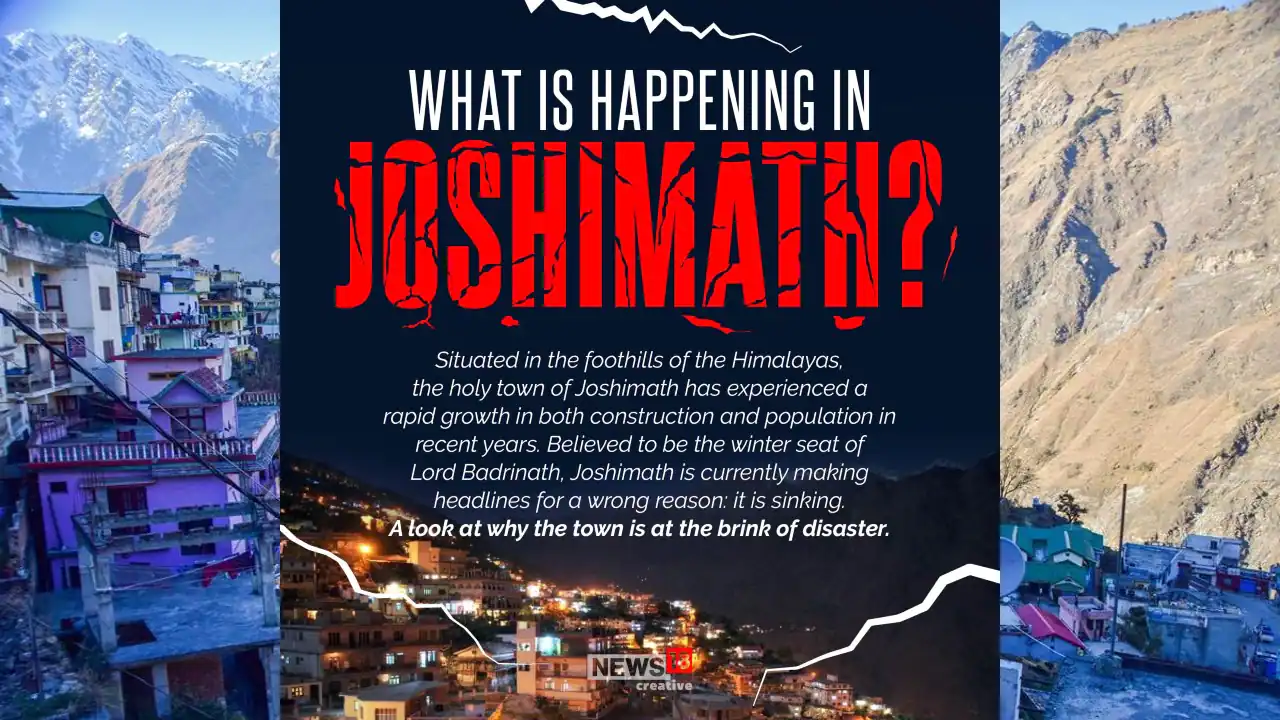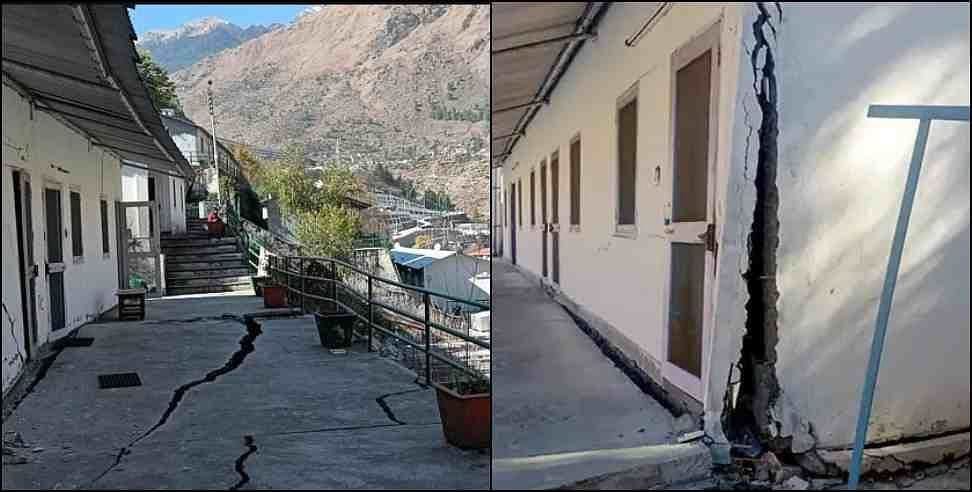Authorities declared Joshimath, Uttarakhand, a landslide and subsidence-hit zone. This declaration came almost a week after cracks appeared in many roads and hundreds of houses.
What exactly is land subsidence?
The National Oceanic and Atmospheric Administration (NOAA) in the United States defines land subsidence as the sinking of the ground.
Underground material movement causes the sinking. This phenomenon can occur over very large areas, such as entire states or provinces. It can also occur over very small areas, such as a house yard corner.
Reasons – This phenomenon can occur due to a variety of man-made or natural causes. Causes such as the removal of water, oil, or natural resources, as well as mining activities are some examples. Subsidence has many well-known causes, including earthquakes, soil erosion, and soil compaction.

What could be the causes of Joshimath’s demise?
The exact cause of Joshimath land subsidence is unknown. However, experts believe the incident was caused by a massive infrastructure project called the Char Dham road project, which is being implemented in the Uttarakhand Himalaya. The residents have also blamed the incident on NTPC’s Tapovan Vishnugad Hydro Power Project. They claim that the tunnel had water seepage “from a punctured aquifer, leading to the drying of water sources in Joshimath.” However, NTPC denied the allegations, claiming that the tunnel built by NTPC does not pass beneath Joshimath. Other reasons could be
- Unplanned construction,
- Over-population, and
- Obstruction of the natural flow of water and hydel power activities.
Furthermore, the area is a seismic zone, which means it is prone to frequent earthquakes.
The MC Mishra committee report first raised the possibility of land subsidence occurring in the region around 50 years ago. This report also warned against “unplanned development in this area, as well as identified natural vulnerabilities.”
A lack of a proper drainage system, possibly as a result of unplanned construction, may also have contributed to the sinking of the area.
Reports suggest that the reactivation of a geographic fault along the Himalayas, where the Indian Plate has pushed under the Eurasian Plate, may have caused the subsidence in Joshimath. (A geographic fault is a fracture or zone of fractures that exists between two blocks of rock.)

Why Joshimath city is extremely vulnerable?
Sand and stone, which is not very capable of bearing heavy loads, deposited and built Joshimath City on an old landslide material. Due to this, the region is extremely vulnerable to the rapidly growing infrastructure and population.
What could be done?
We should center a Himalayan development strategy on the region’s natural resources, such as biodiversity and ecotourism. Rather than constructing massive dams, the emphasis should be on small projects that will help provide local energy supply.
Farmers have farmed around 20% of the agricultural land in Uttarakhand’s Himalayan districts, and the majority of them have abandoned their traditional practices. The remainder of the land is lying fallow.
We should consider traditional knowledge, agricultural practices, construction practices, and local cultural aspects in a human well-being strategy. Previous experiences of forming expert committees and having their recommendations ignored, it is unclear what benefit the government would gain by forming another one. The Joshimath incident serves as a warning that the Himalayan environment may be unable to withstand another push caused by intrusive anthropogenic activities.



